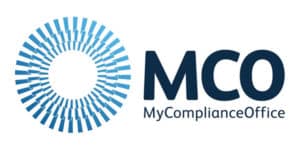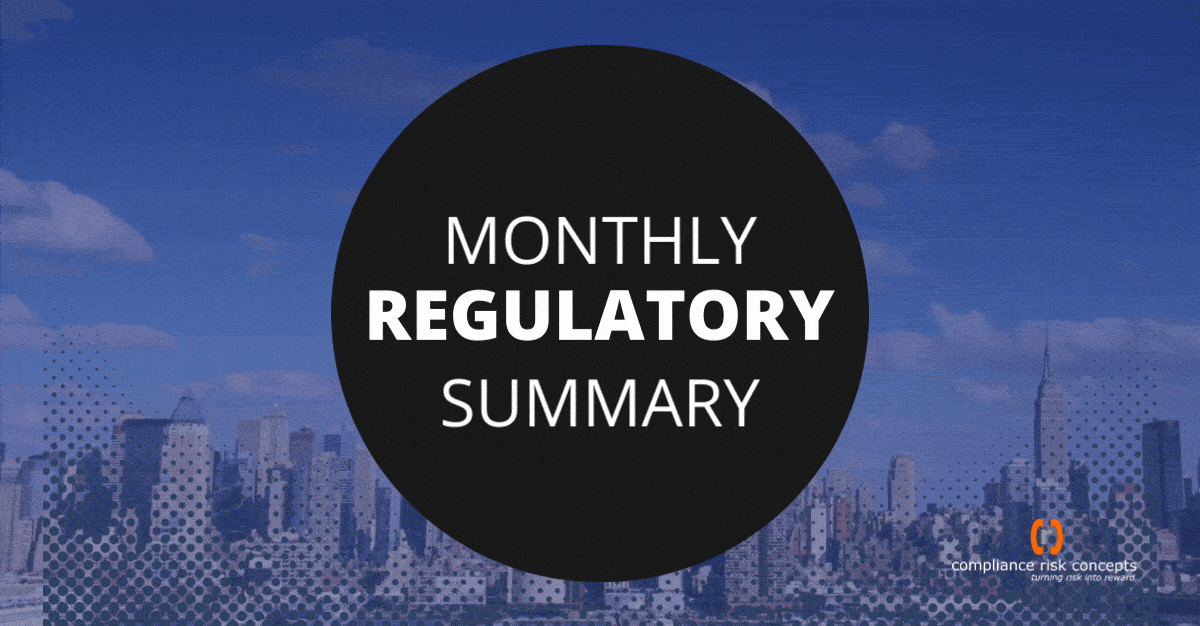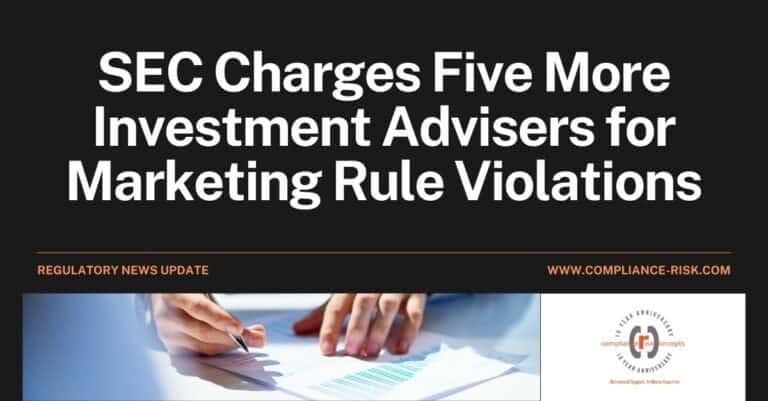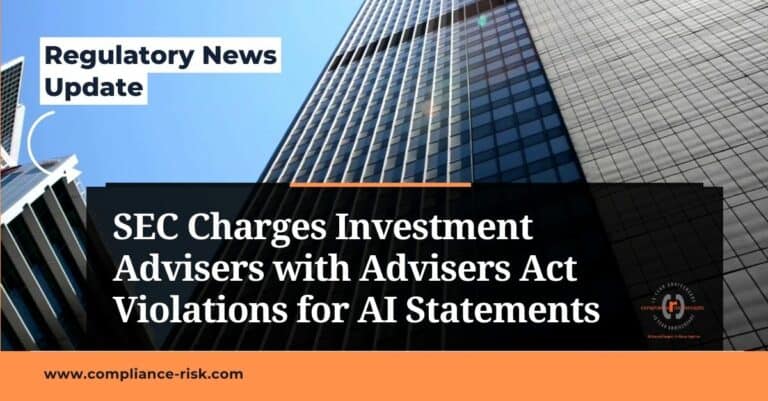As the regulatory landscape is constantly evolving, Compliance Risk Concepts (“CRC”) is issuing its monthly review and summary of FINRA, SEC, and NFA notices and bulletins to assist our clients in keeping abreast of notable regulatory developments and deadlines in an effort to strengthen their compliance and regulatory initiatives.
FINRA
Regulatory Notices
Per Notice 22-12, FINRA has adopted amendments to Rule 6730 (Transaction Reporting) to require members to append a modifier to a corporate bond trade that is part of a portfolio trade when reporting to FINRA’s Trade Reporting and Compliance Engine (TRACE). The amendments to Rule 6730 will take effect on May 15, 2023.
The amended text of the rule is set forth in Attachment A.
Special Notices
There were no special notices in May.
SEC
Final Rules
There were no final rules in May.
Proposed Rules
Per Release No. 34-94868, the SEC is reopening the comment period for a release proposing new rules and amendments to an existing rule under the Investment Advisers Act of 1940 (“Advisers Act”) that would affect private fund advisers and proposing amendments to the Advisers Act compliance rule, which would affect all registered
investment advisers (“Advisers Act Proposing Release”). The SEC is also reopening the comment period for a release proposing amendments to its rules under the Securities Exchange Act of 1934 (“Exchange Act”) that would amend a rule under the Exchange Act, which defines certain terms used in the statutory definition of “exchange” under the Exchange Act, re-propose amendments to Regulation ATS for ATSs that trade government securities as defined under the Exchange Act or repurchase and reverse repurchase agreements on government securities (“Government Securities ATSs”), re-propose amendments to Regulation SCI to apply to ATSs that meet certain volume thresholds in U.S. Treasury Securities or in a debt security issued or guaranteed by a U.S. executive agency or government-sponsored enterprise (“Agency Securities”), amend the fair access rule for ATSs, and amend Form ATS-N, Form ATS-R, and Form ATS (“Exchange Act Proposing Release”). These actions will allow interested persons additional time to analyze the issues and prepare their comments, which would benefit the SEC in its consideration of final rules.
The comment periods for the proposed rules published in the Federal Register on March 24, 2022, at 87 FR 16886, and March 18, 2022, at 87 FR 15496 are reopened. Comments should be received on or before June 13, 2022.
Per Release No. 33-11067, the SEC is extending the comment period for a release proposing amendments to its rules under the Securities Act of 1933 (“Securities Act”) and Securities Exchange Act of 1934 (“Exchange Act”) that would require registrants to provide certain climate-related information in their registration statements and annual reports. The comment period for the release was originally scheduled to close on May 20, 2022. The new comment period will end on June 17, 2022. This action will allow interested persons additional time to analyze the issues and prepare their comments, which would benefit the SEC in its consideration of final rules.
Per Release No. 33-11068, the SEC is proposing to amend rules and forms under both the Investment Advisers Act of 1940 (“Advisers Act”) and the Investment Company Act of 1940 (“Investment Company Act”) to require registered investment advisers, certain advisers that are exempt from registration, registered investment companies, and business development companies, to provide additional information regarding their environmental, social, and governance (“ESG”) investment practices. The proposed amendments to these forms and associated rules seek to facilitate enhanced disclosure of ESG issues to clients and shareholders. The proposed rules and form amendments are designed to create a consistent, comparable, and decision-useful regulatory framework for ESG advisory services and investment companies to inform and protect investors while facilitating further innovation in this evolving area of the asset management industry. In addition, we are proposing an amendment to Form N-CEN applicable to all Index Funds, as defined in Form N-CEN, to provide identifying information about the index.
Interim Final Rules
There were no interim final rules in May.
Interpretive Releases
There were no interpretive releases in May.
Policy Statements
There were no policy statements in May.
NFA
Notices to Members
Notice I-22-15
May 18, 2022
Proxies and Approximations Related to Alternative Reference Rates and Other Indices for Initial Margin Model Purposes
Since October 2020, NFA has allowed swap dealers (SD) to include the Secured Overnight Financing Rate (SOFR) in ISDA's Standard Initial Margin Model (SIMM) calculations by using an overnight index swap proxy, subject to certain conditions. NFA is aware that SDs may use alternative reference rates or indices other than SOFR for discounting purposes and trade products based on these reference rates or indices. Since these rates or indices may not be directly modeled in the SIMM framework, SDs using these alternative reference rates or indices must map each rate to a proxy (i.e., the closest equivalent curve in the IM calculations) to include the exposures in the SIMM's calculations.
CFTC Regulation 23.154(b)(2)(xi) prohibits an SD from incorporating any proxy or approximation used to capture the risks of the SD's uncleared swaps unless it first demonstrates to the CFTC or NFA that the proxy or approximation is appropriate. NFA will not object to an SD including alternative reference rates or indices in SIMM calculations by appropriate proxy or approximation subject to the following conditions:
- The SD emails NFA at swapsmarginmodel@nfa.futures.org that it is incorporating alternative reference rates or indices by proxy or approximation (and identifies the alternative reference rates or indices) in its risk management system;
- The SD's model risk management (MRM) team issues an approval, a preliminary positive opinion or a waiver to include alternative reference rates or indices for the exposure margined via SIMM (which may include establishing effective compensating controls or an enhanced monitoring framework to ensure the conservativeness of IM calculated using SIMM); and
- If the SD's MRM team authorizes alternative reference rates or indices by waiver, the team must establish a timeframe to conduct its in-depth review of the introduced proxy or approximation in the IM framework within six months of production implementation.
As part of the MRM team's validation activities to include an alternative reference rate or index exposure in SIMM, via a proxy or approximation, the MRM team must, at a minimum, consider the following:
- Scope of the approximation for each curve (i.e., new products and/or discounting and affected trade volumes as measured by trade count, notional amount and risk sensitivity amounts);
- Impact on the SD's risk profile of its existing portfolios; and
- Anticipated impact on SIMM ongoing monitoring testing results (backtesting, benchmarking and risks-not-in-SIMM) for current portfolios due to the introduction of new products and discounting curve changes.
SDs must have policies and procedures for identifying and evaluating proxies and approximations used in the SIMM framework, as well as for identifying and addressing deteriorating performance, including:
- A methodology to conduct a quantitative assessment of the proxy or approximation's impact on the IM amount;
- Thresholds for escalation;
- Compensating controls; and
- Remediation.
NFA will review each SD's implementation of alternative reference rates or indices in its risk management system and in SIMM (via proxy) at a later date and will focus on the MRM team's validation activities.
News Releases
There were no NFA news releases in May.
Hot Issues
Regulatory Exam Preparedness
Regulators have been out in force throughout the pandemic and continue to do so. We have observed trends toward lengthy, deeper dive exams, conducted remotely. Firms should consider initiatives aimed at identifying and remediating regulatory gaps in their programs, particularly with respect to current exam focus area trends.
FINRA has released its Examination and Risk Monitoring Program for 2022. Similarly, the SEC has also released its 2022 Examination Priorities. Firms should review these reports to identify if the regulators’ exam priorities intersect with the firm’s business lines.
Our Perspective
Regulators continue to demonstrate their commitment to protecting investors by aggressively pursuing bad actors and reviewing and updating regulations to guard investors against constantly evolving threats.
The best approach to regulatory compliance is a proactive one. Staying ahead of the curve by taking note of statements and guidance released by regulators and using them as a barometer to assess the current regulatory climate can help ensure that a firm is prepared for a regulatory exam. Rather than scrambling to rectify issues or meet deadlines, a thorough, active compliance program that considers and incorporates regulatory developments is in a better position to satisfy regulators and preserve operations so they can best serve their clients.
For more information, please contact:
Mitch Avnet
p. (646) 346-2468
mavnet@compliance-risk.com
David Amster
p. (917) 568-6470
damster@compliance-risk.com
Sources:
- FINRA May 2022 Industry Notices
- SEC Regulatory Actions
- NFA Notices to Members













